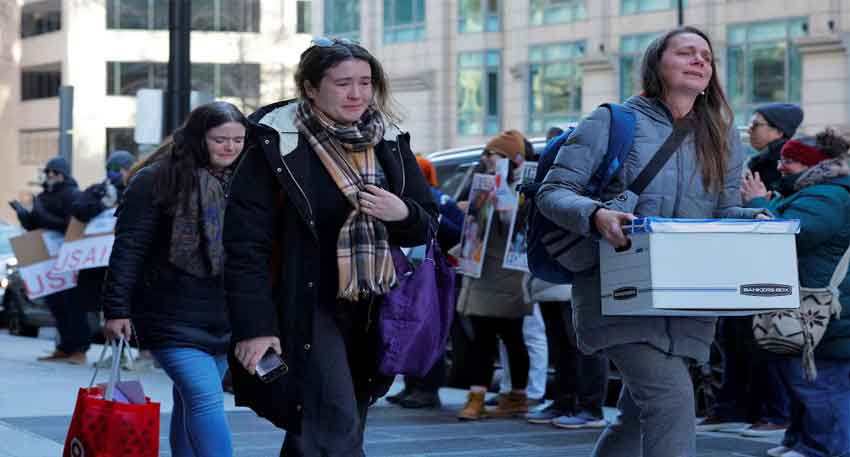
Before those rulings on Thursday, federal agencies faced a Thursday deadline to submit large-scale downsizing plans as part of Trump s push to radically remake the federal bureaucracy, a task he has largely left to Elon Musk s Department of Government Efficiency.
Get weekly news and analysis on U.S. politics and how it matters to the world with the Reuters Politics U.S. newsletter. Sign up here.
So far, DOGE has overseen potential cuts of more than 100,000 jobs across the 2.3 million-member federal civilian workforce, the freezing of foreign aid, and the canceling of thousands of programs and contracts.
Federal agencies faced a Thursday deadline to submit reorganization blueprints for what Trump last month termed "large-scale reductions in force."
Opponents of Trump s radical remaking of government have tried to slow him with lawsuits. Court rulings in California and Maryland on Thursday ordered agencies to reinstate thousands of probationary employees who had been dismissed in recent weeks, setting up a test of whether Trump may defy the judiciary.
The prospect for further job losses comes with financial markets already rattled about the economic risks posed by Trump s global trade war. Stock markets have fallen dramatically over the past two weeks, wiping out more than $5 trillion in value over concerns that Trump s policies could lead to a recession.
With the tech billionaire Musk at his side, Trump signed an executive order on February 11 directing all agencies to "promptly undertake preparations to initiate large-scale reductions in force," using a legal term commonly referred to as RIF to denote mass layoffs.
The Internal Revenue Service, the tax-collecting agency that has long been a target of scorn for Republicans, is planning to eliminate 20% to 25% of its workforce by May 15, according to a person briefed on the agency s plans. The IRS had about 100,000 workers when Trump took office, meaning up to 25,000 are set to lose their jobs.
The planned job cuts are being described internally as the first phase of the agency s efforts to reduce career workers, the person briefed on the matter said, indicating there could be additional cuts after May 15.
The IRS did not immediately respond to a request for comment.
The Department of Veterans Affairs was aiming to cut more than 80,000 workers, and the U.S. Department of Education said on Tuesday it would lay off nearly half its 4,000-strong staff.
The Social Security Administration, the agency that provides benefits to tens of millions of older Americans, plans to cut 7,000 workers.
The National Oceanic and Atmospheric Administration, which provides weather forecasts, planned to lay off more than 1,000 workers.
COURT CHALLENGES
Several agencies have offered employees lump-sum payments to voluntarily retire early, which could help the agencies avoid legal complications inherent in the RIF process, which unions have vowed to fight in court.
Court rulings on the layoffs have had mixed results but in a setback for Trump on Thursday U.S. District Judge William Alsup in San Francisco ruled that probationary workers, typically those with less than two years on the job, should be reinstated at the departments of Defense, Veterans Affairs, Agriculture, Energy, Interior and the Treasury.
The White House vowed to challenge Alsup s decision.
The ruling does not pertain to the career employees that are set to be fired in the new round of downsizing. That process could eliminate tens of thousands of federal jobs.
After Alsup s ruling was handed down, a federal judge in Maryland also directed the administration to reinstate tens of thousands of recently hired federal workers.
U.S. District Judge James Bredar in Baltimore agreed with 20 Democratic-led states that 18 agencies that had fired probationary employees en masse in recent weeks violated regulations governing the process for laying off federal workers.
The two rulings were the largest legal setbacks for Trump and Musk s downsizing plans yet.




